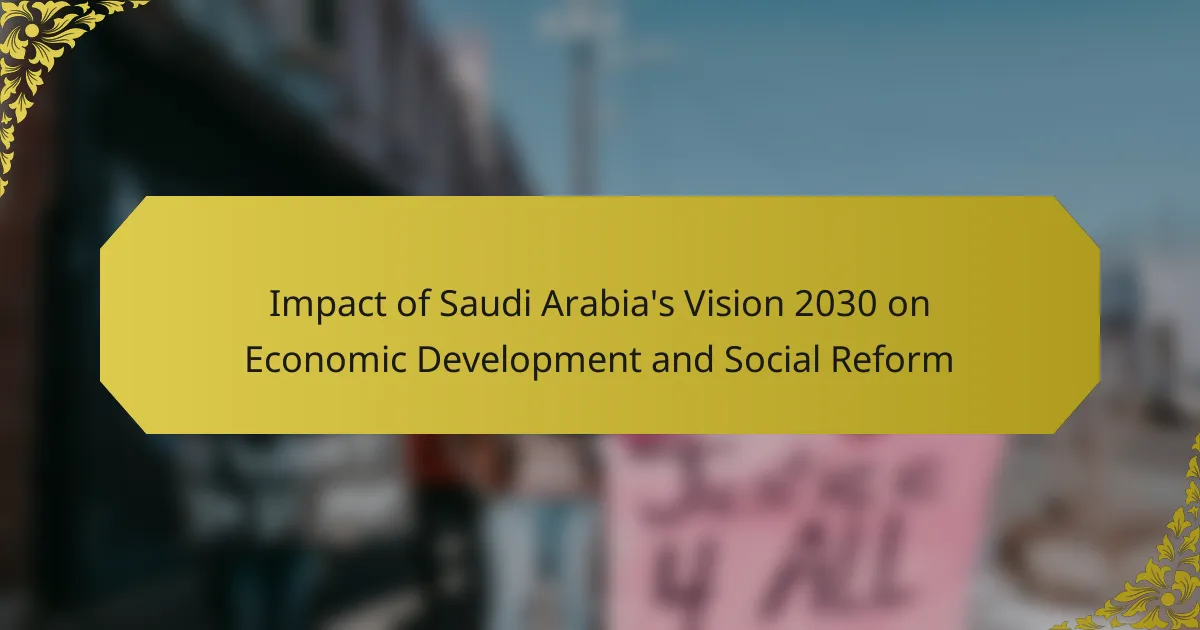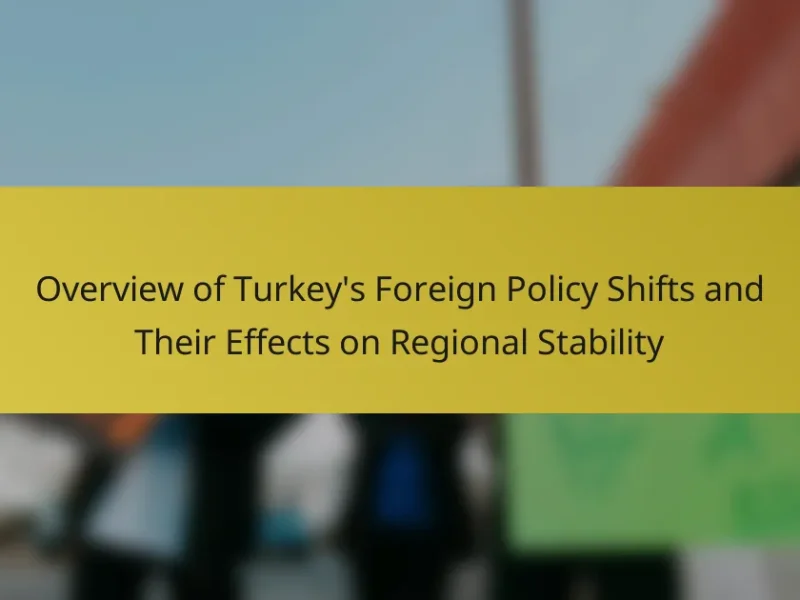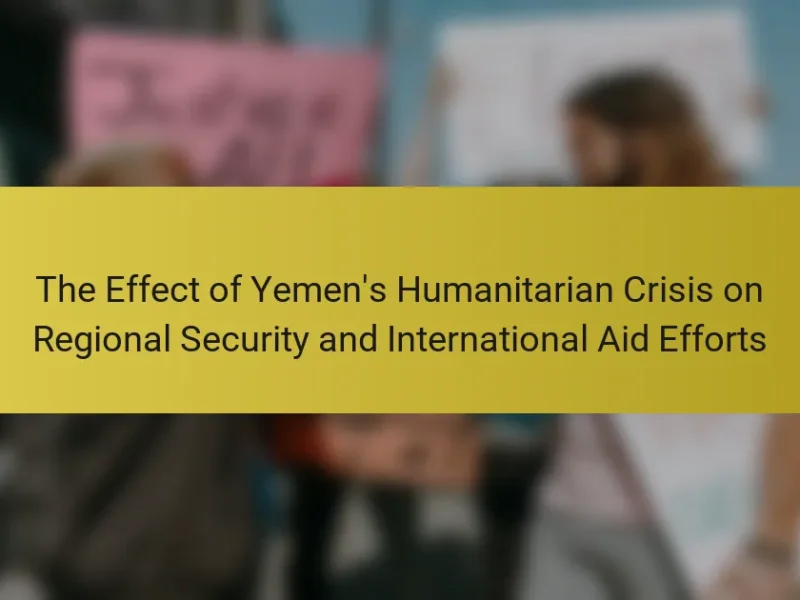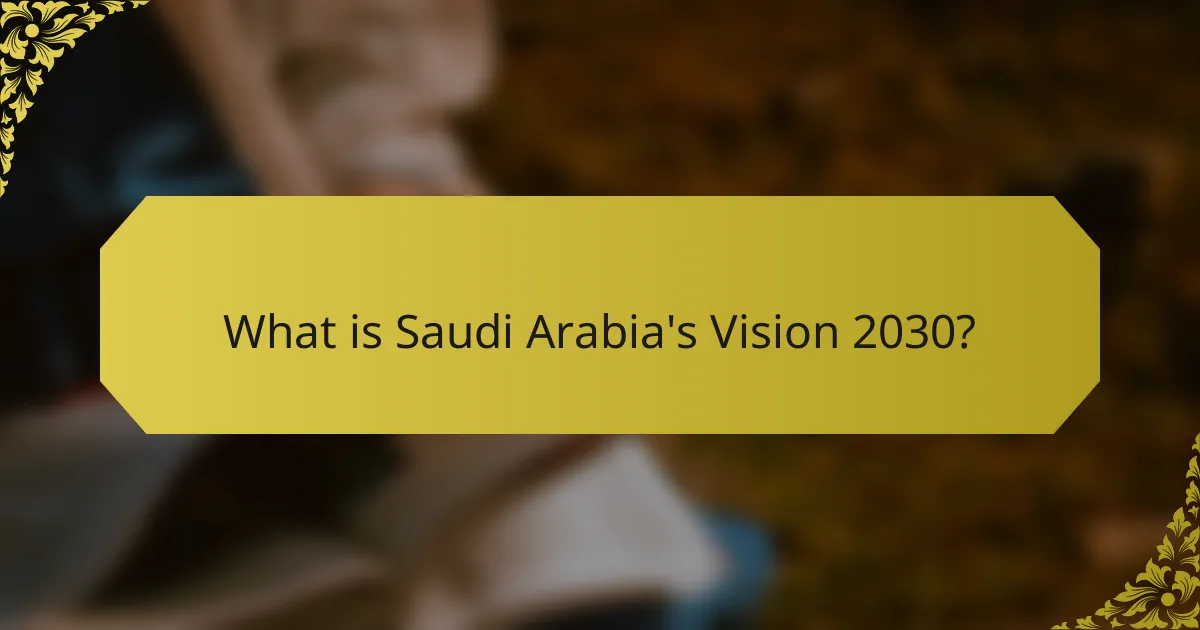
What is Saudi Arabia’s Vision 2030?
Saudi Arabia’s Vision 2030 is a strategic framework aimed at reducing the country’s dependence on oil. It seeks to diversify the economy and develop public service sectors. Vision 2030 was announced in April 2016 by Crown Prince Mohammed bin Salman. The initiative focuses on three main pillars: a vibrant society, a thriving economy, and an ambitious nation.
The plan includes various programs and projects to enhance tourism, entertainment, and investment. It aims to increase the private sector’s contribution to the economy. Vision 2030 also emphasizes improving education and healthcare systems. The initiative is expected to create millions of jobs and attract foreign investment.
By 2030, Saudi Arabia aims to increase non-oil revenues significantly. The government intends to enhance the quality of life for its citizens. This strategic vision reflects a long-term commitment to sustainable development and modernization.
How was Saudi Arabia’s Vision 2030 developed?
Saudi Arabia’s Vision 2030 was developed through a strategic framework initiated in April 2016. The framework aimed to diversify the economy and reduce dependence on oil. Key stakeholders, including government officials and private sector experts, contributed to its creation. The process involved extensive consultations and workshops. These discussions focused on identifying national priorities and opportunities for growth. Vision 2030 outlines specific goals in various sectors such as health, education, and tourism. It also emphasizes the importance of transparency and accountability in governance. The plan aims to enhance the quality of life for citizens and residents.
What are the key goals of Saudi Arabia’s Vision 2030?
The key goals of Saudi Arabia’s Vision 2030 are to diversify the economy, enhance public service sectors, and promote a vibrant society. The vision aims to reduce the country’s dependence on oil revenue. It targets increasing non-oil revenue from 163 billion SAR to 1 trillion SAR by 2030. Another goal is to improve the quality of life for citizens and residents. This includes expanding entertainment options and promoting cultural activities. Vision 2030 also emphasizes the importance of sustainability and environmental protection. The initiative aims to increase the contribution of the private sector to the economy from 40% to 65%. Additionally, it seeks to increase foreign direct investment to 5.7% of GDP. These goals are designed to ensure long-term economic stability and social reform in Saudi Arabia.
Who are the primary stakeholders in Saudi Arabia’s Vision 2030?
The primary stakeholders in Saudi Arabia’s Vision 2030 include the Saudi government, private sector companies, and citizens. The Saudi government drives the Vision 2030 initiative through the Council of Economic and Development Affairs. Private sector companies play a crucial role in implementing economic reforms and diversifying the economy. Citizens are essential stakeholders as they are directly impacted by reforms in employment, education, and social services. Additionally, international investors and organizations are also stakeholders, as they contribute to funding and expertise for various projects under Vision 2030. These stakeholders collectively aim to achieve economic diversification and social reform in Saudi Arabia.
What is the significance of Vision 2030 for Saudi Arabia?
Vision 2030 is a strategic framework aimed at transforming Saudi Arabia’s economy and society. Its significance lies in diversifying the economy away from oil dependency. The initiative focuses on enhancing public service sectors, including health, education, and tourism. Vision 2030 aims to increase the private sector’s contribution to the economy. It also seeks to boost foreign investment and create job opportunities for citizens. The plan includes initiatives to empower women and enhance their roles in the workforce. Vision 2030 is expected to improve the quality of life for Saudi citizens. The framework is backed by specific goals and measurable outcomes, ensuring accountability and progress.
How does Vision 2030 aim to diversify the economy?
Vision 2030 aims to diversify the economy by reducing dependence on oil revenues. It promotes the development of non-oil sectors such as tourism, entertainment, and technology. The strategy includes attracting foreign investment to stimulate economic growth. Vision 2030 also emphasizes enhancing the private sector’s role in the economy. It seeks to create job opportunities for Saudi citizens in various industries. The plan outlines specific initiatives, such as the establishment of economic zones. These zones are designed to encourage innovation and entrepreneurship. By diversifying the economy, Saudi Arabia aims to achieve sustainable development and economic resilience.
What role does Vision 2030 play in social reform?
Vision 2030 plays a crucial role in social reform in Saudi Arabia. It aims to diversify the economy and reduce dependence on oil. This initiative promotes social changes that enhance the quality of life. Vision 2030 emphasizes women’s empowerment and increased participation in the workforce. It also seeks to improve education and healthcare systems. The plan includes initiatives to boost cultural and entertainment sectors. These reforms are designed to foster a more open and inclusive society. By 2030, the goal is to create a vibrant society that supports innovation and creativity.
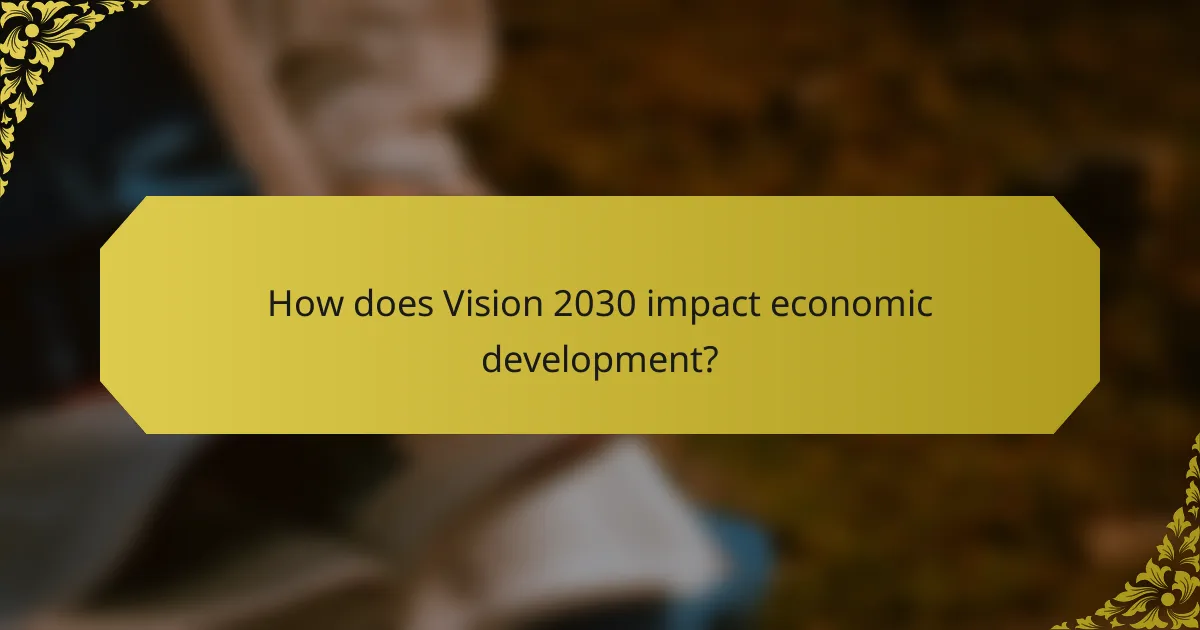
How does Vision 2030 impact economic development?
Vision 2030 significantly impacts economic development in Saudi Arabia by diversifying the economy away from oil dependency. It aims to boost sectors such as tourism, entertainment, and technology. The initiative seeks to create job opportunities and enhance private sector participation. Vision 2030 targets increasing foreign direct investment to stimulate growth. According to the Saudi Arabian government, the plan aspires to raise the private sector’s contribution to GDP from 40% to 65%. The introduction of new regulations and incentives is designed to attract international businesses. Furthermore, the development of mega-projects like NEOM is expected to drive innovation and economic activity. These efforts collectively aim to create a sustainable and resilient economy by 2030.
What economic sectors are prioritized in Vision 2030?
Vision 2030 prioritizes several economic sectors in Saudi Arabia. These sectors include tourism, entertainment, renewable energy, and technology. The tourism sector aims to diversify the economy and reduce dependence on oil. The entertainment sector focuses on developing local culture and attracting international events. Renewable energy is emphasized to promote sustainability and energy independence. The technology sector is targeted to enhance innovation and digital transformation. These priorities are outlined in the Vision 2030 framework to foster economic growth and social reform.
How will tourism be transformed under Vision 2030?
Tourism in Saudi Arabia will be transformed under Vision 2030 by diversifying attractions and enhancing infrastructure. The plan aims to increase international tourist arrivals from 17 million in 2019 to 100 million by 2030. New cultural and entertainment projects, such as NEOM and the Red Sea Project, will be developed. These initiatives will showcase Saudi Arabia’s heritage and natural beauty. Investment in hospitality and service sectors will create jobs and boost the economy. The government aims to attract investments worth $20 billion in tourism. Vision 2030 seeks to promote sustainable tourism practices. This transformation will position Saudi Arabia as a global tourism hub.
What investments are being made in technology and innovation?
Saudi Arabia is investing heavily in technology and innovation as part of its Vision 2030 initiative. The government has allocated over $500 billion for the NEOM project, which focuses on advanced technologies and sustainable living. Investments are also directed towards artificial intelligence, with plans to establish a national AI strategy. Additionally, the Saudi Public Investment Fund is backing various tech startups, both domestically and internationally. The country aims to foster a knowledge-based economy through these investments. Recent reports indicate that tech investments could exceed $20 billion in the next few years. These initiatives are designed to diversify the economy away from oil dependency and create new job opportunities.
How does Vision 2030 affect job creation and employment?
Vision 2030 significantly enhances job creation and employment in Saudi Arabia. The initiative aims to diversify the economy beyond oil dependency. It promotes sectors such as tourism, entertainment, and technology. These sectors are projected to generate millions of new jobs by 2030. For instance, the National Industrial Development and Logistics Program targets creating over 1.6 million jobs. Additionally, the Saudi Vision 2030 framework includes initiatives for workforce development and training. This focus on education and skill enhancement addresses the needs of the evolving job market. Consequently, Vision 2030 is positioned to transform employment opportunities across various industries in the Kingdom.
What initiatives are in place to boost youth employment?
Saudi Arabia’s Vision 2030 includes several initiatives to boost youth employment. The National Industrial Development and Logistics Program aims to create job opportunities in various sectors. The Human Capability Development Program focuses on enhancing skills and education for the youth. The Entrepreneurship Program supports startups and small businesses, encouraging youth participation in the economy. The Saudi Arabian Monetary Authority provides funding for youth-led initiatives. The Technical and Vocational Training Corporation offers training programs aligned with market needs. These initiatives collectively aim to reduce youth unemployment and integrate young people into the workforce.
How does Vision 2030 support entrepreneurship?
Vision 2030 supports entrepreneurship by providing a comprehensive framework aimed at fostering a vibrant business environment. It includes initiatives that enhance access to funding for startups. The Saudi government has established various funds, such as the Saudi Industrial Development Fund, to support new ventures. Vision 2030 also emphasizes the importance of small and medium-sized enterprises (SMEs) in economic diversification. It aims to increase the contribution of SMEs to the GDP from 20% to 35% by 2030. Additionally, it promotes regulatory reforms to ease business operations and reduce bureaucratic hurdles. The plan includes establishing business incubators and accelerators to nurture innovative ideas. Furthermore, Vision 2030 enhances educational programs to equip entrepreneurs with necessary skills. These measures create a supportive ecosystem for aspiring entrepreneurs in Saudi Arabia.
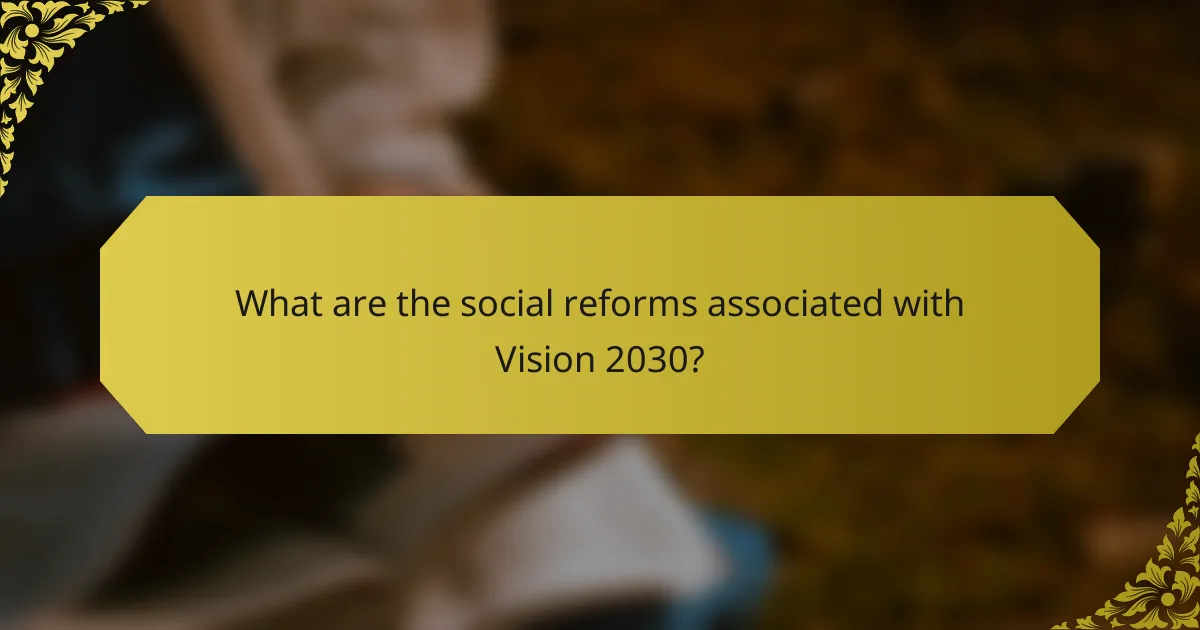
What are the social reforms associated with Vision 2030?
Social reforms associated with Vision 2030 include enhancing women’s rights and increasing their participation in the workforce. The plan aims to raise women’s employment from 22% to 30% by 2030. It also promotes the establishment of a more inclusive society by reducing gender segregation. Vision 2030 emphasizes the importance of education reform to improve skills and competencies. Additionally, it seeks to promote cultural and entertainment opportunities to enrich social life. The reforms are designed to improve quality of life and support economic diversification. These initiatives reflect Saudi Arabia’s commitment to modernizing its social framework.
How does Vision 2030 promote gender equality?
Vision 2030 promotes gender equality by implementing policies that empower women in various sectors. It aims to increase women’s participation in the workforce to 30% by 2030. The initiative includes legal reforms to enhance women’s rights and access to opportunities. Vision 2030 also supports women’s leadership roles in both public and private sectors. Programs have been established to provide training and resources for women entrepreneurs. Additionally, it encourages the elimination of gender-based discrimination in workplaces. These measures contribute to a more inclusive and equitable society.
What changes are being made to women’s rights in Saudi Arabia?
Recent changes to women’s rights in Saudi Arabia include increased freedoms and opportunities. Women can now drive, which was prohibited until 2018. They also have greater access to the workforce. The government aims to have women make up 30% of the workforce by 2030. Legal reforms have improved women’s ability to travel and access services without male guardianship. Additionally, women can now attend sporting events and concerts in public venues. These changes are part of Saudi Arabia’s Vision 2030 initiative, which seeks to diversify the economy and enhance social reform.
How does Vision 2030 address education reform?
Vision 2030 addresses education reform by emphasizing the enhancement of educational quality and accessibility. The initiative aims to align education with labor market needs. It promotes the development of critical thinking and problem-solving skills. Vision 2030 also encourages the integration of technology in education. The plan includes the establishment of new educational institutions and programs. These changes are designed to foster innovation and entrepreneurship. Furthermore, Vision 2030 seeks to increase the participation of women in education. This comprehensive approach aims to create a skilled workforce for the future.
What cultural initiatives are part of Vision 2030?
Vision 2030 includes several cultural initiatives aimed at enhancing Saudi Arabia’s cultural landscape. These initiatives focus on promoting the arts, heritage, and entertainment sectors. One significant initiative is the establishment of the Quality of Life Program. This program aims to increase cultural participation among citizens and residents. Another initiative is the development of cultural and entertainment events, such as the Riyadh Season. This event features concerts, festivals, and theatrical performances. Additionally, the initiative supports the preservation of cultural heritage through museums and historical sites. The National Strategy for Culture also plays a vital role in these efforts. It aims to foster creativity and innovation in the cultural sector. Overall, these initiatives are designed to enrich the cultural identity of Saudi Arabia and enhance its global standing.
How does Vision 2030 aim to enhance cultural heritage and arts?
Vision 2030 aims to enhance cultural heritage and arts by promoting cultural initiatives and preserving historical sites. The strategy includes increasing investments in the cultural sector. It also focuses on developing museums, galleries, and theaters. Vision 2030 encourages local and international partnerships in the arts. The plan seeks to boost tourism through cultural events and festivals. Additionally, it aims to foster creativity and innovation in artistic expressions. These efforts are part of a broader goal to diversify the economy and enrich the social fabric of Saudi Arabia.
What role does entertainment play in the Vision 2030 agenda?
Entertainment is a key component of Saudi Arabia’s Vision 2030 agenda. It aims to diversify the economy and reduce reliance on oil revenues. The agenda promotes cultural events, concerts, and festivals to enhance the quality of life. Entertainment initiatives are designed to attract tourism and create jobs. The establishment of the General Entertainment Authority supports this vision. In 2020, entertainment contributed approximately $1.3 billion to the national economy. Vision 2030 seeks to foster a vibrant society through entertainment options. This approach aligns with the goal of improving the overall well-being of citizens and residents.
What challenges does Vision 2030 face in implementation?
Vision 2030 faces several challenges in implementation. One major challenge is the need for significant economic diversification. Reliance on oil revenues remains high, making it difficult to transition to alternative sources of income. Another challenge is the requirement for extensive regulatory reforms. These reforms are necessary to attract foreign investment and foster a competitive business environment. Additionally, there are social and cultural barriers to change. Resistance to reforms in traditional sectors can hinder progress. Furthermore, there is a need for skilled workforce development. The current education system may not adequately prepare citizens for new job opportunities. Lastly, geopolitical factors can impact stability and investment. Regional tensions may deter foreign investors, affecting the overall success of Vision 2030.
How are economic fluctuations impacting Vision 2030’s goals?
Economic fluctuations are significantly impacting Vision 2030’s goals. The goals include diversifying the economy and reducing dependence on oil revenues. Economic downturns can hinder investment in non-oil sectors. This reduces the pace of economic diversification. Fluctuations can lead to budget deficits, impacting public spending on Vision 2030 projects. For instance, lower oil prices in recent years have strained government finances. This has resulted in delays or scaling back of infrastructure projects. Consequently, achieving the ambitious targets set by Vision 2030 becomes more challenging.
What social resistance exists against the reforms of Vision 2030?
Social resistance against the reforms of Vision 2030 includes opposition from conservative groups. These groups fear loss of traditional values and cultural identity. Many citizens express concerns over rapid social changes. There are worries about increased Western influence on Saudi society. Some individuals resist changes in gender roles and employment practices. Protests have emerged over issues like women’s rights and public entertainment. Additionally, skepticism exists regarding the government’s ability to implement reforms effectively. This resistance reflects a broader struggle between modernization and cultural preservation in Saudi Arabia.
What are the best practices for supporting Vision 2030’s objectives?
Engaging stakeholders is a best practice for supporting Vision 2030’s objectives. This involves collaboration among government, private sector, and civil society. Establishing clear communication channels enhances transparency and trust. Implementing data-driven decision-making improves policy effectiveness. Fostering innovation through research and development accelerates economic diversification. Investing in education aligns workforce skills with market needs. Promoting sustainable practices ensures long-term environmental health. Monitoring progress through key performance indicators tracks achievement of goals.
How can businesses align with Vision 2030’s goals?
Businesses can align with Vision 2030’s goals by adopting sustainable practices and investing in innovation. They should focus on diversifying their revenue streams to reduce dependence on oil. Engaging in public-private partnerships can also enhance collaboration with government initiatives. Companies can invest in local talent development to support the workforce transformation. Additionally, businesses should prioritize digital transformation to improve efficiency and competitiveness. Aligning with environmental sustainability goals can attract investment and enhance brand reputation. According to the Saudi Vision 2030 framework, these strategies contribute to economic diversification and social development.
What role can citizens play in the success of Vision 2030?
Citizens play a crucial role in the success of Vision 2030 by actively participating in its initiatives. Their engagement in community development fosters innovation and drives economic growth. Citizens can contribute by providing feedback on policies and programs, ensuring they meet the needs of society. Participation in local governance enhances transparency and accountability. By supporting local businesses, citizens stimulate economic activity and job creation. Educational involvement empowers the workforce, aligning skills with market demands. Additionally, civic engagement in social initiatives promotes cultural awareness and community cohesion. Overall, active citizen participation is essential for achieving the objectives of Vision 2030.
Saudi Arabia’s Vision 2030 is a strategic framework aimed at diversifying the economy and reducing dependence on oil revenues while enhancing public service sectors. The initiative focuses on key areas such as economic development, social reform, and job creation, targeting significant increases in non-oil revenues and private sector contributions. It emphasizes the importance of education, healthcare, and cultural initiatives, alongside promoting gender equality and youth employment. The article will explore the implications of Vision 2030 on Saudi Arabia’s economic landscape and societal changes, detailing the challenges and best practices for achieving its objectives.
